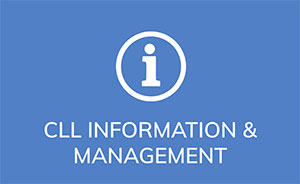Many chronic lymphocytic leukemia/small lymphocytic lymphoma (CLL / SLL) patients are insured under Medicare – either Original Medicare with a drug plan (Part A, B, and D “a la carte”) or a Medicare Advantage Plan (including Parts A, B, and D Prix fixe). Unfortunately, over the past several years, drug costs have risen significantly for targeted oral anti-cancer drugs.
Intravenous Chemotherapy (e.g., FCR, rituximab, venetoclax, obinutuzumab) is covered under Part B Medicare. Patient cost is either approximately a 20% copay or fully covered if enrolled in a robust supplemental Plan (e.g., Original Medicare with Medigap Plan G or F).
What about oral anti-cancer agents? Does Part B cover the costs?
Oral anti-cancer drugs must meet special criteria to be covered by Part B. When Medicare references “oral chemotherapy,” they include “targeted therapies” such as ibrutinib or venetoclax that don’t kill cancer cells in the same way that traditional “chemo” drugs do but are prescribed to treat cancer. These criteria change on an annual basis.
Most, if not all, of the novel oral anti-cancer drugs for CLL / SLL are not covered by Part B. That leaves us with Part D or the pharmacy benefit coverage, which can be very costly for CLL / SLL patients.
Here’s the good news …The Inflation Reduction Act of 2022, recently signed into law, includes the following:
- Part D out-of-pocket drug costs will be capped at $2,000 starting in 2025. Previously there was no out-of-pocket cap. You’ll also have the option to pay out-of-pocket costs in monthly amounts over the plan year instead of when they happen.
- Price negotiation. For the first time, Medicare will be able to negotiate directly with manufacturers for the price of certain high-priced brand-name Medicare Part B and Part D drugs.
- In 2023, Medicare will announce the first ten drugs selected for negotiation. A BTK inhibitor (e.g. Ibrutinib) will likely be on the list. Negotiated prices for these first ten drugs will be effective in 2026. Fifteen Part D drugs in 2025 (effective in 2027). Fifteen Part B and Part D drugs in 2026 (effective in 2028). Twenty Part B and Part D drugs in 2027 (effective in 2029). Twenty Part B and Part drugs in 2028 and every year after.
- Catastrophic coverage. After you reach the catastrophic coverage phase, there will be no copays starting in 2024. Previously there was a copay (5%).
- Extra help affording prescription drug coverage will expand to certain people with limited resources who earn less than 150% of the federal poverty level starting in 2024.
- Vaccines. Starting in 2023, people with Medicare Part D drug coverage will pay nothing out-of-pocket for adult vaccines, including the shingles vaccine.
Eileen Hilton, MD

















